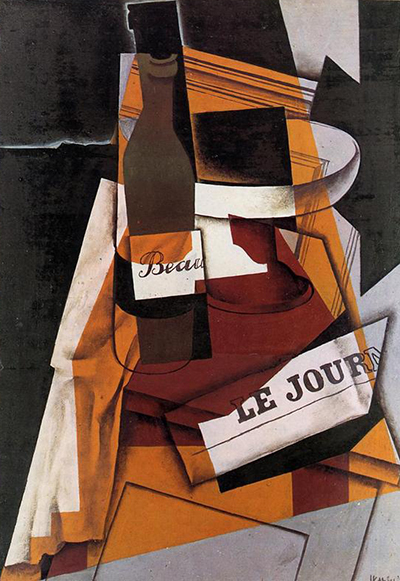Bottle, Newspaper and Fruit Bowl is a Cubist artwork from Juan Gris in 1915.
The genre of still life painting was found throughout the Cubist art movement, including all of the Gris, Braque and Picasso who were the main three contributors to this group. Their choices of content to depict was also fairly consistent and you can find some of the most popular items within this painting. The newspaper, bottle and fruit bowl are all repeated again and again, with the subject of lunch and breakfast tables being the most repetitive theme for them. Gris himself was a professional illustrator in his early years and this gave him an advantage in how he finished his works clearly and concisely, perparing them well to be sold in the private market.
Le Journal is chosen as the newspaper for this particular composition and the artist always selected newspapers from iconic brands rather than more local 'rags'. He would also use Le Figaro, elsewhere. The colour scheme used in this artwork is relatively restrained, with elements of orange being the only bright colour used within the whole painting. The rest is constructed from tones of grey, beige and brown which makes this artwork not overly eye catching, but the touches to the bottle and newspaper do leave an element of class and elegance to the finished work. The fractal nature of this art movement makes it hard to identify elements within the painting but we are aided by the consistency of his approach across a number of other artworks and by comparing them we can confidently conclude as to what each shape represents.
Georges Braque was a Spanish artist who became passionate about France, which was to become his home for most of his career. He even asked some to call him "Jean" in order to further envelop him into the culture. At this time the French nation was leading the way within European art, with a whole host of innovative artists from around the world to be found in Paris or some of the surrounding cities. It was at the forefront of a number of new art movements that we know accept as significant and respected. He was just one, but a significant one, who came from abroad to further boost the art scene of France.




